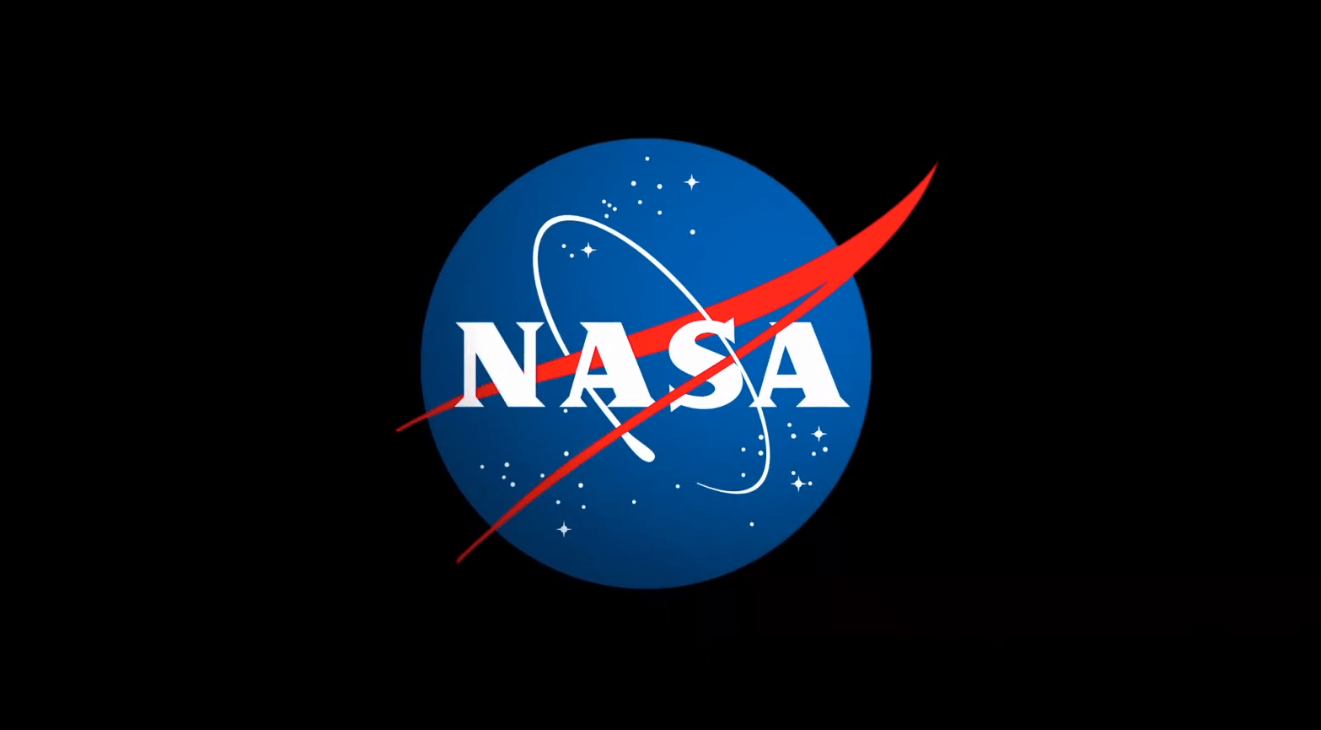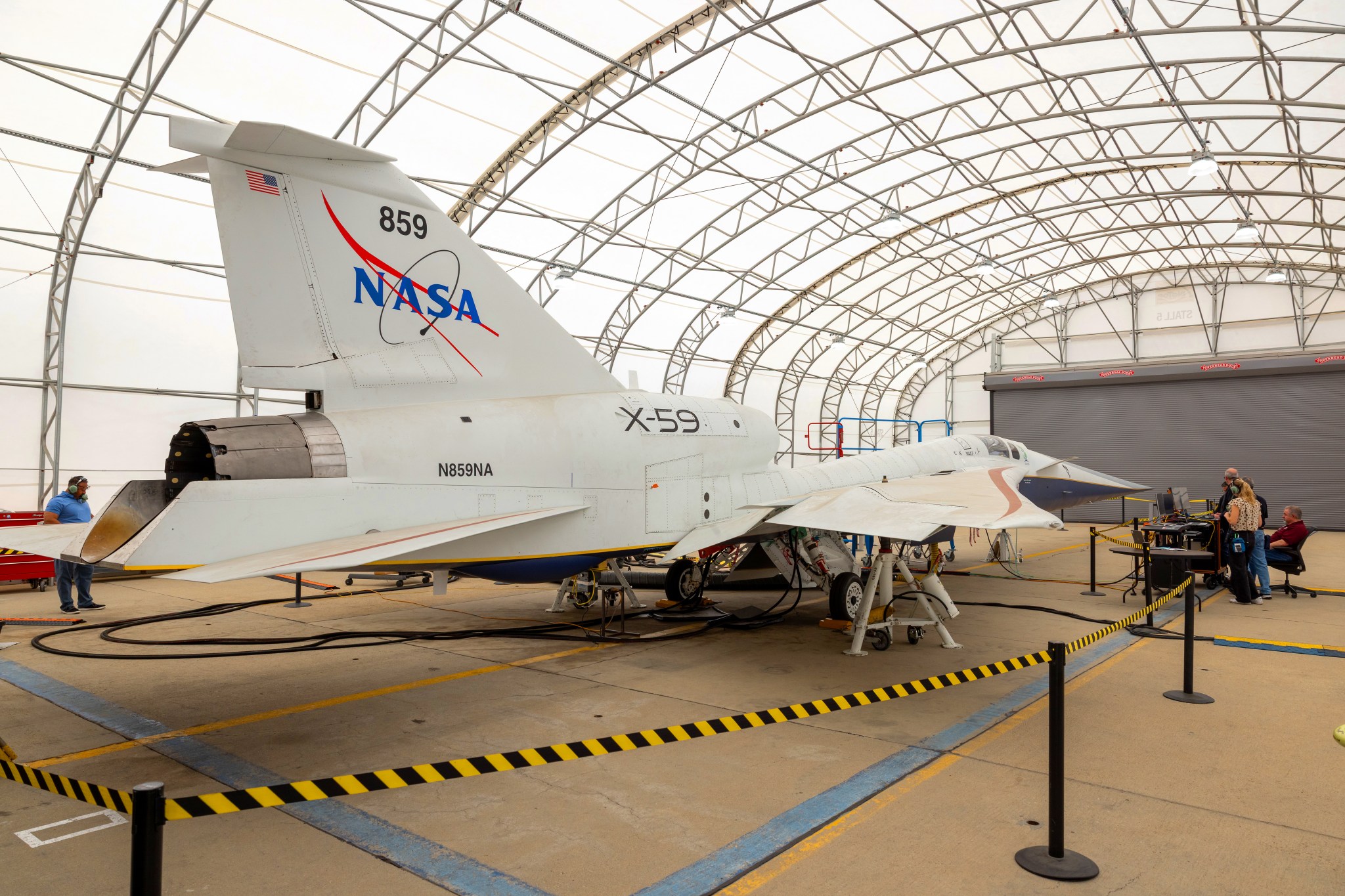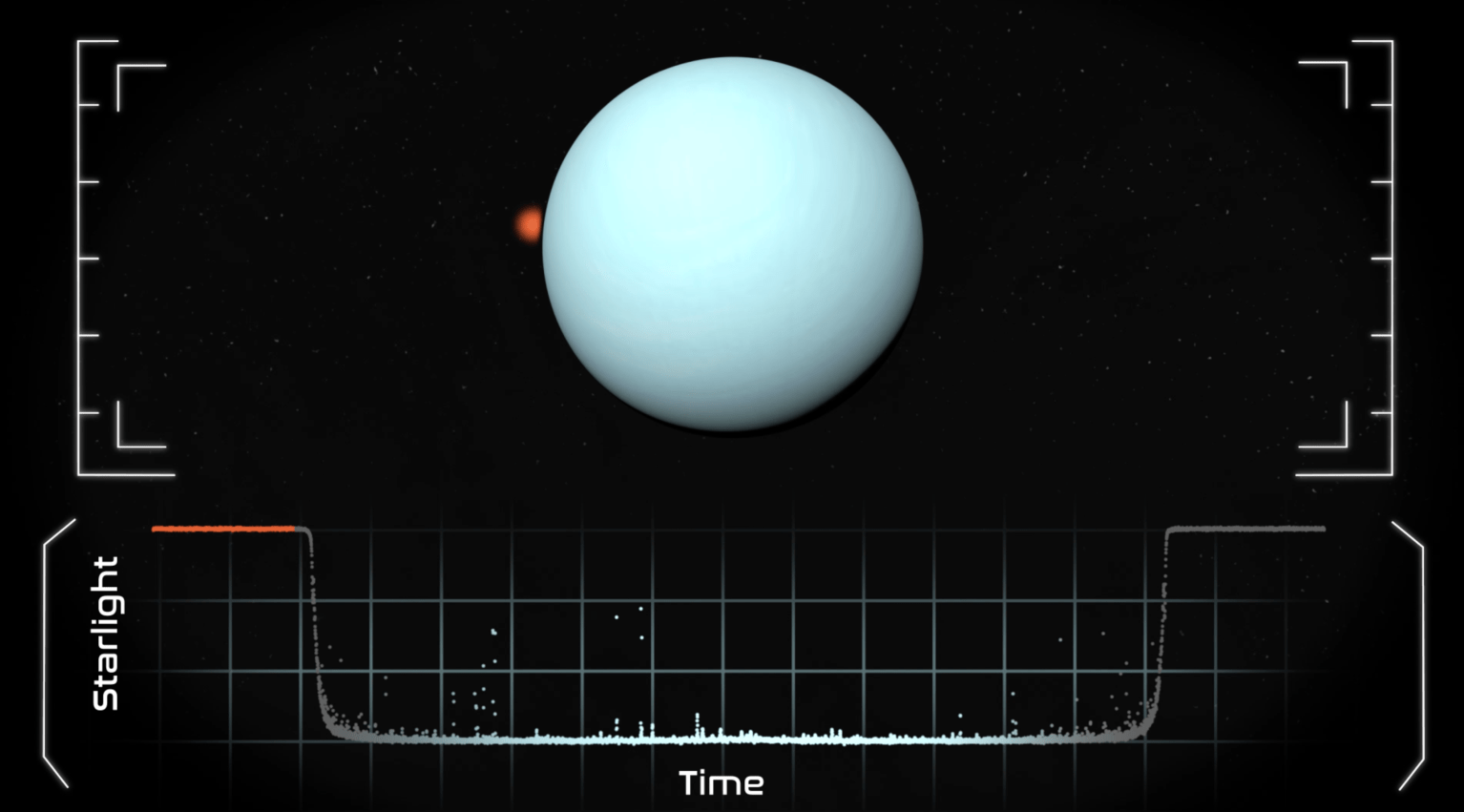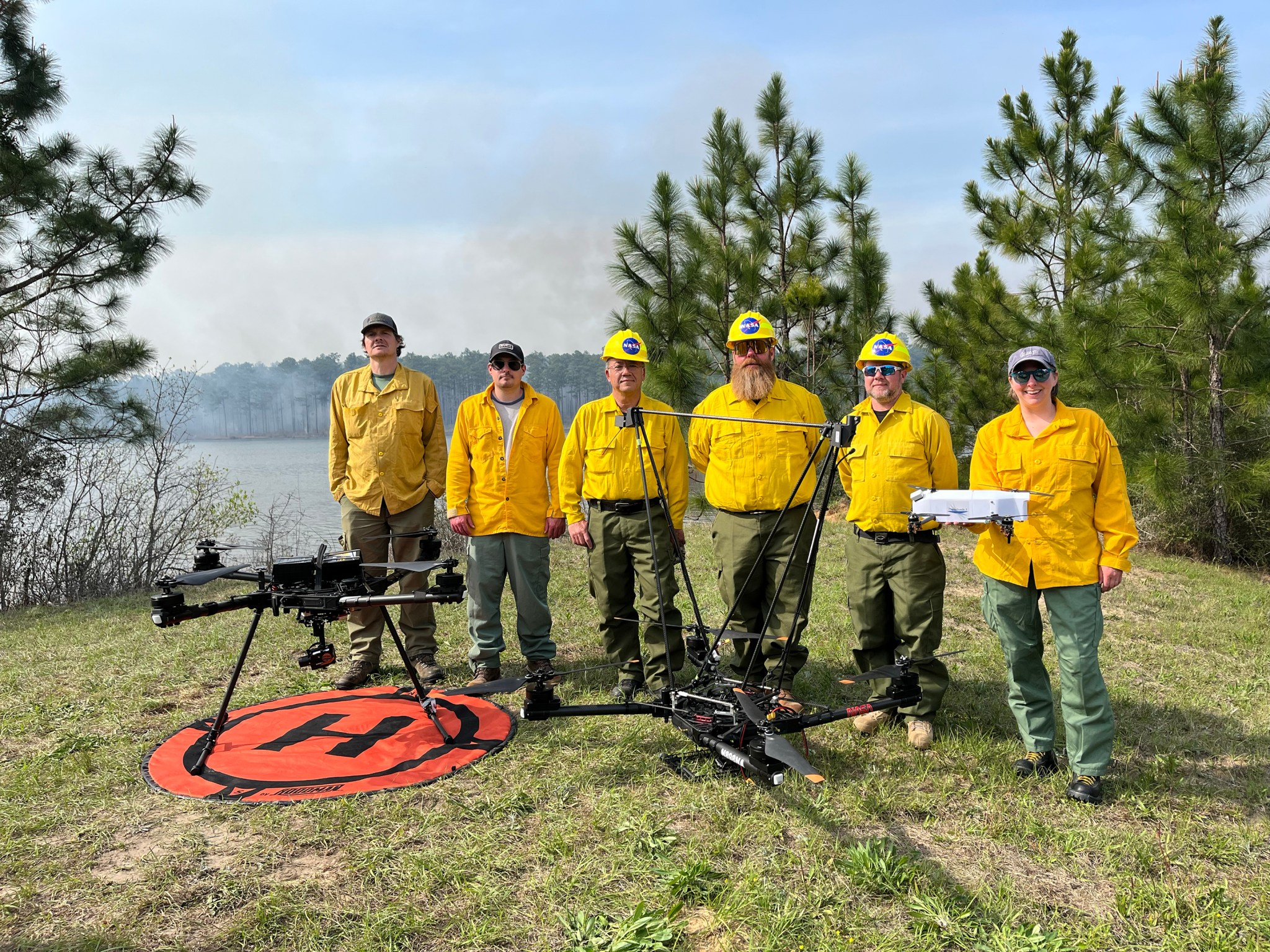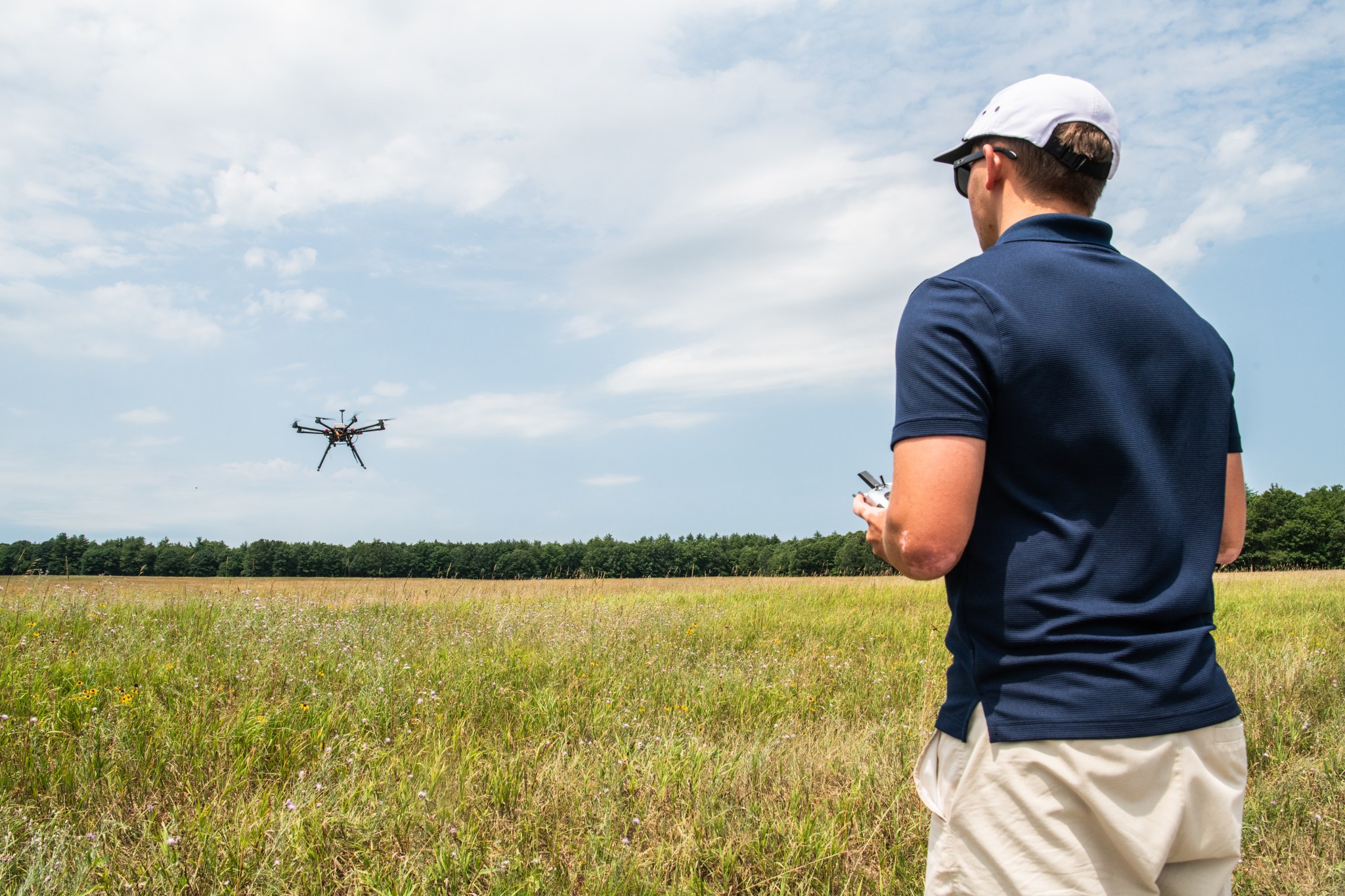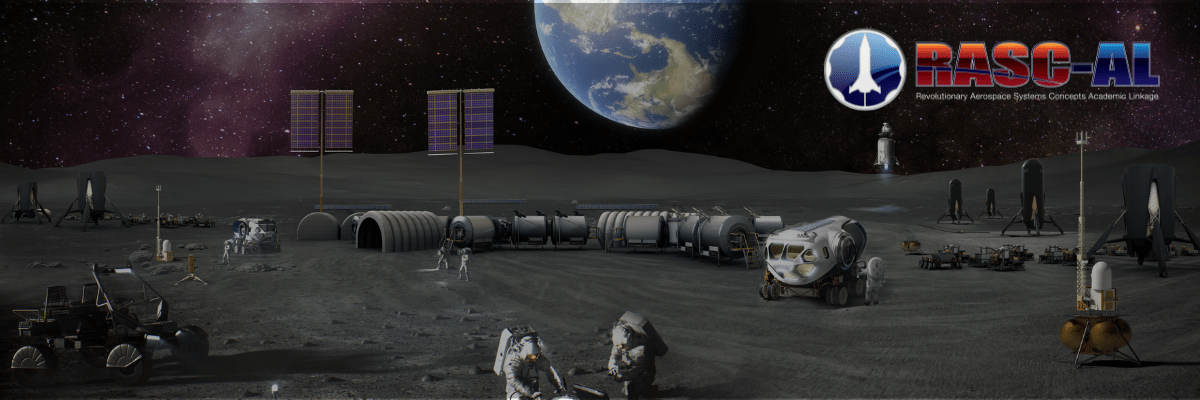Credit: NASA NASA has awarded a bridge contract to ASRC Federal System Solutions LLC of Beltsville, Maryland, to provide financial support and project planning and control services to the agency. The Program Analysis and Control Bridge Contract has a total potential value up to $98 million with a 13-month period of performance beginning Saturday, May 24. The contract includes both cost-plus-fixed-fee and indefinite-delivery/indefinite-quantity components. The scope of the work includes business functions such as accounting, scheduling, documentation and configuration management, as well as security compliance. The work will occur at NASA…
Read MoreTag: Langley Research Center
NASA X-59’s Latest Testing Milestone: Simulating Flight from the Ground
5 min read Preparations for Next Moonwalk Simulations Underway (and Underwater) NASA’s X-59 quiet supersonic research aircraft is seen during its “aluminum bird” systems testing at Lockheed Martin’s Skunk Works facility in Palmdale, California. The test verified how the aircraft’s hardware and software work together, responding to pilot inputs and handling injected system failures. Lockheed Martin / Garry Tice NASA’s X-59 quiet supersonic research aircraft successfully completed a critical series of tests in which the airplane was put through its paces for cruising high above the California desert – all…
Read MoreTop Prize Awarded in Lunar Autonomy Challenge to Virtually Map Moon’s Surface
NASA named Stanford University of California winner of the Lunar Autonomy Challenge, a six-month competition for U.S. college and university student teams to virtually map and explore using a digital twin of NASA’s In-Situ Resource Utilization Pilot Excavator (IPEx). The winning team successfully demonstrated the design and functionality of their autonomous agent, or software that performs specified actions without human intervention. Their agent autonomously navigated the IPEx digital twin in the virtual lunar environment, while accurately mapping the surface, correctly identifying obstacles, and effectively managing available power. Lunar simulation developed by…
Read MoreRobots, Rovers, and Regolith: NASA Brings Exploration to FIRST Robotics 2025
What does the future of space exploration look like? At the 2025 FIRST Robotics World Championship in Houston, NASA gave student robotics teams and industry leaders a first-hand look—complete with lunar rovers, robotic arms, and real conversations about shaping the next era of discovery. Students and mentors experience NASA exhibits at the 2025 FIRST Robotics World Championship at the George R. Brown Convention Center in Houston from April 16-18. NASA/Sumer Loggins NASA engaged directly with the Artemis Generation, connecting with more than 55,000 students and 75,000 parents and mentors. Through…
Read MorePlanetary Alignment Provides NASA Rare Opportunity to Study Uranus
5 Min Read Planetary Alignment Provides NASA Rare Opportunity to Study Uranus Artist's illustration showing a distant star going out of sight as it is eclipsed by Uranus – an event known as a planetary stellar occultation. Credits: NASA/Advanced Concepts Laboratory When a planet’s orbit brings it between Earth and a distant star, it’s more than just a cosmic game of hide and seek. It’s an opportunity for NASA to improve its understanding of that planet’s atmosphere and rings. Planetary scientists call it a stellar occultation and that’s exactly what…
Read MoreNASA Studies Wind Effects and Aircraft Tracking with Joby Aircraft
3 min read Preparations for Next Moonwalk Simulations Underway (and Underwater) One of several NASA distributed sensing ground nodes is set up in the foreground while an experimental air taxi aircraft owned by Joby Aviation sits in the background near NASA’s Armstrong Flight Research Center in Edwards, California, on March 12, 2025. NASA is collecting information during this study to help advance future air taxi flights, especially those occurring in cities, to track aircraft moving through traffic corridors and around landing zones. NASA/Genaro Vavuris NASA engineers began using a network of…
Read MoreNASA Supports Wildland Fire Technology Demonstration
3 min read Preparations for Next Moonwalk Simulations Underway (and Underwater) Drones were a key part of testing new technology in support of a prescribed burn in Geneva State Forest, which is about 100 miles south of Montgomery, Alabama. The effort is part of the agency’s multi-year FireSense project, which is aimed at testing technologies that could eventually serve the U.S. Forest Service as well as local, state, and other federal wildland fire agencies. From left are Tim Wallace and Michael Filicchia of the Desert Research Institute in Nevada; Derek…
Read MoreNASA Makes Progress on Advanced Drone Safety Management System
4 min read Preparations for Next Moonwalk Simulations Underway (and Underwater) A Massachusetts Institute of Technology Lincoln Laboratory pilot controls a drone during NASA’s In-Time Aviation Safety Management System test series in collaboration with a George Washington University team July 17-18, 2024, at the U.S. Army’s Fort Devens in Devens, Massachusetts. MIT Lincoln Laboratory/Jay Couturier From agriculture and law enforcement to entertainment and disaster response, industries are increasingly turning to drones for help, but the growing volume of these aircraft will require trusted safety management systems to maintain safe operations.…
Read MoreNASA’s X-59 Completes ‘Cruise Control’ Engine Speed Hold Test
2 min read Preparations for Next Moonwalk Simulations Underway (and Underwater) NASA’s X-59 quiet supersonic research aircraft sits on a ramp at Lockheed Martin Skunk Works in Palmdale, California, during sunset. The one-of-a-kind aircraft is powered by a General Electric F414 engine, a variant of the engines used on F/A-18 fighter jets. The engine is mounted above the fuselage to reduce the number of shockwaves that reach the ground. The X-59 is the centerpiece of NASA’s Quesst mission, which aims to demonstrate quiet supersonic flight and enable future commercial travel…
Read MoreNASA Selects 14 Finalist Teams for the 2025 RASC-AL Competition
This year’s RASC-AL competition invited undergraduate and graduate students from across the nation to develop new, innovative concepts to improve our ability to operate on the Moon, Mars, and beyond.ASA NASA Fourteen university teams have been selected as finalists for NASA’s 2025 Revolutionary Aerospace Systems – Academic Linkage (RASC-AL) Competition. This year’s competition invited undergraduate and graduate students from across the nation to develop new, innovative concepts to improve our ability to operate on the Moon, Mars, and beyond. Finalists will present their proposed concepts to a panel of NASA…
Read More